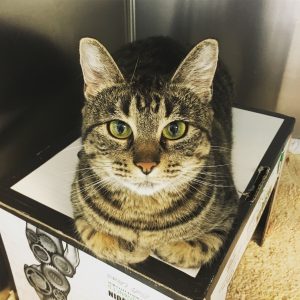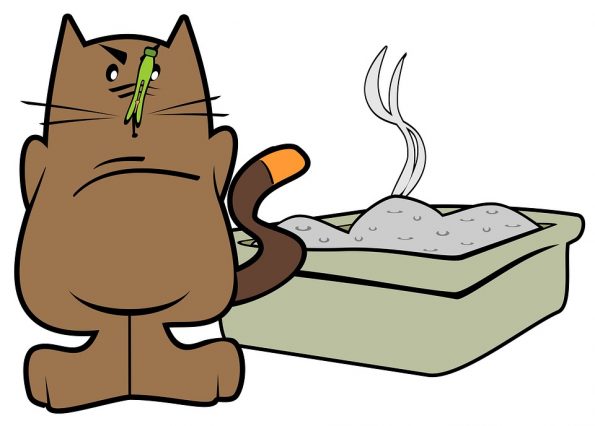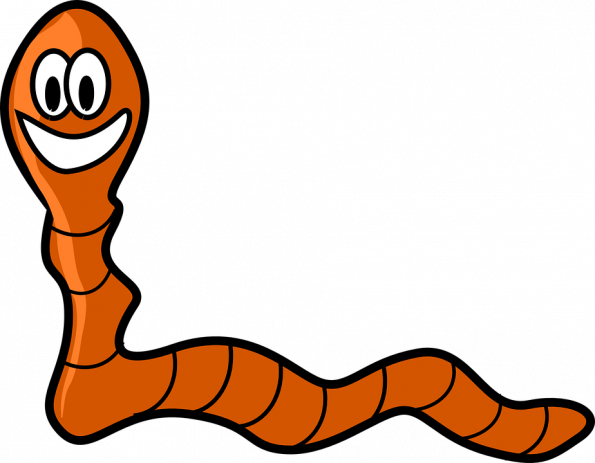My son has a very intelligent four year-old Pomeranian who is marking his territory. My daughter-in-law says Nugget has to go. Please advise!
Marking is normal behavior in dogs. Despite the naturalness of this behavior, it is one of the more distasteful canine habits, especially if the marking occurs inside on household items.
Dogs urinate, typically on upright objects, to leave a scent mark which is a form of communication to other dogs. Both male and female dogs may mark, but this behavior is most common in non-neutered males.
Dogs may be communicating a variety of messages with their marking behavior. Nugget may be saying, “Hey, this territory is mine and I am ready to protect my beloved family no matter what!” He may also be commenting on his sexual status and reproductive success. Marking can also be used to aid in social interactions, especially if there is instability in the household social structure.
If this habit is new, it is important to first determine if there is an underlying medical problem that may be triggering inappropriate elimination. Diseases of the urinary system, such as a urinary tract infection, kidney failure, or bladder stones can cause an increase in the frequency of urination. Other diseases that cause an increase in water intake, such as diabetes mellitus and Cushing’s disease, may also result in frequent urination.
If medical issues have been ruled out, the next consideration is if the dog is neutered or not. Neutering an intact male dog may reduce urine marking in up to 80% of dogs, and completely eliminate it in up to 40%. The longer a male dog is left intact, the more the marking behavior becomes ingrained, and the less likely that neutering will result in total elimination of marking. But it is a very important step in removing the hormonal influence on marking behavior.
Another question you need to ask is if your dog has ever been fully housetrained. If Nugget has never been consistently reliable in the house, it is time to go back to square one with housetraining. Select a site outdoors that you want to be used for elimination purposes. It is important to focus on where you want your dog TO go, as opposed where he is not supposed to go.
When you take your dog to the chosen potty area, give him a short, encouraging command such as “Go potty” or “Get busy”. As soon as elimination occurs, lavish him with praise and attention. A small treat may also be given. The timing of the reward is important – be sure it is immediately after elimination.
When Nugget is indoors, he must be strictly supervised so you can see when he has to go potty and then take him outside to the designated elimination area. One of the best ways to keep your dog supervised is to tether train – attach a leash to your belt and to Nugget. Then he will not be able to sneak away and urinate.
When not able to supervise your dog, a confinement area such as a crate should be used. However, if soiling occurs in the crate, you need to find another way to confine your dog until housetraining is complete. A dog that consistently eliminates in his crate loses his natural cleanliness instincts and may be more likely to develop separation anxiety.
Isolated marking episodes are often in response to a change in the house such as a visiting pet or new piece of furniture. Consistent marking in the house may be in response to stress or anxiety. Specific treatment depends on the underlying cause of the anxiety.
Supervise your dog if a new object is introduced, on a leash if necessary, as he explores. If Nugget starts heading to an area in the home where he routinely marks, interrupt him with a verbal command or leash; then give him playtime or a training session to distract and reward him.
Finally, it is important to remove all evidence of previously marked sites, or Nugget will be drawn to continue marking these areas. Complete removal means not just what you can see, but what your dog can smell. A fresh accident can be deodorized with clear vinegar (undiluted or 50:50 water solution). The room may stink until the vinegar dries, but the vinegar smell discourages future marking. Older accidents require the use of a bacterial enzyme odor eliminator, such as Anti-Icky Poo, Simple Solution or Nature’s Miracle.










